Recent Articles
Popular Makes
Body Types
2018 Volkswagen Atlas vs. 2018 Honda Pilot: Which Is Best?
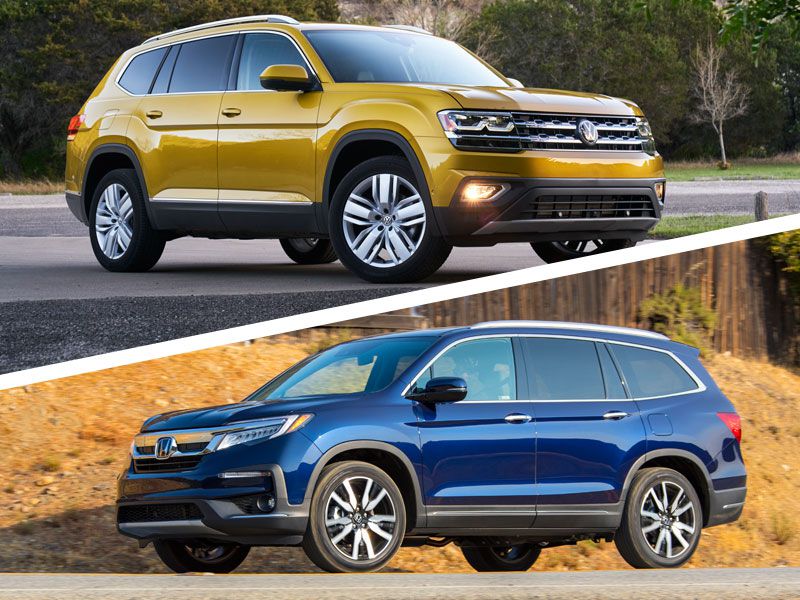
2018 Volkswagen Atlas vs Honda Pilot exterior ・ Photo by Volkswagen / Honda
The 2018 Volkswagen Atlas and 2018 Honda Pilot are two full-size SUVs with room for the family and all their stuff. While the Pilot has long been a popular family car, the Atlas is an all-new model for Volkswagen. Both offer three rows of seating with the flexibility to reconfigure those seats depending on your cargo and passenger needs.
Each also has a wide range of tech and convenience features and useful towing capability, but there are key differences between these two SUVs. Let’s take a closer look at the 2018 Volkswagen Atlas and 2018 Honda Pilot and see which is the better choice for you.
Pricing and Trims
The 2018 Volkswagen Atlas comes in three trims, starting with the S at $30,750 with a 2.0-liter turbocharged four-cylinder engine. A 3.6-liter V6 is optional on this trim and standard across the remaining lineup. The SE adds features for $35,240 while the SEL sits at the top of the lineup with a price of $41,140.
The 2018 Honda Pilot has five trims starting with the LX at $30,900 with a standard 3.5-liter V6 engine. Features increase as you move up the trim range to the Elite at $47,470. Although the Pilot offers a more luxurious interior at every trim, the Volkswagen Atlas comes out ahead for its affordability across the entire model range.
2018 Volkswagen Atlas
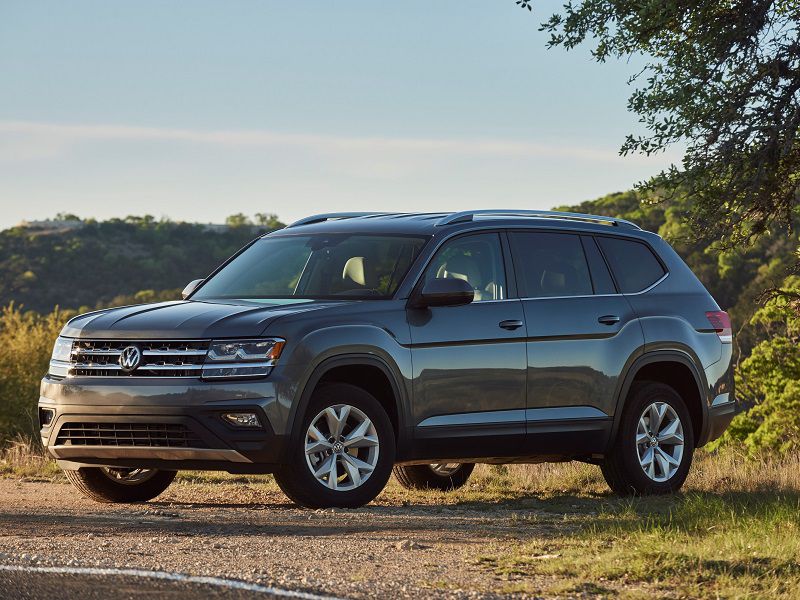
Photo by Volkswagen
Safety
The Volkswagen Atlas and Honda Pilot are both Insurance Institute for Highway Safety 2018 Top Safety Picks. While the Atlas received a top score of Good in all crash tests, the Pilot received Good ratings in all crash tests except small front overlap on the passenger side, which was rated Acceptable. Both vehicles also received an overall five-star rating in National Highway Traffic Safety Administration crash tests.
What differentiates these SUVs is the availability of advanced safety features as you move through the trim ranges. While both offer good features overall, the Honda Pilot makes them available lower in the trim range so you don’t have to go with a more expensive trim to get more advanced safety tech.
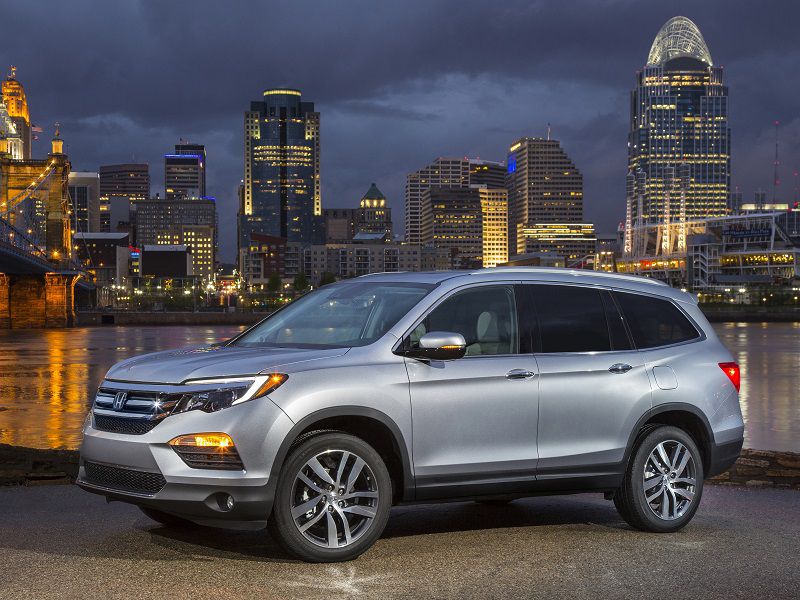
Photo by Honda
Interior Styling
The interior of the Honda Pilot is attractive at every trim level, even in the base model. Once you get up to the Elite and Touring trims, things get downright luxurious with leather accents, heated seats, and trims that make the Pilot look upscale. Even though there are plastic trim pieces, they’re of good quality and never make the Pilot look or feel cheap.
The Volkswagen Atlas takes a different approach, which isn’t surprising based on its pricing. The base model looks and feels like a base model, and you really have to get up to the top trim before it loses its economy vibe. Although the Atlas is attractive, the Pilot has it beat.

Photo by Honda
Seating
A large part of why you buy a full-size SUV is the extra seating. The Honda Pilot has three rows of seating with room for up to eight passengers. There’s a second-row bench seat or optional captain’s chairs on the Elite trim that reduce capacity to seven but make it easier to access the third row.
The Volkswagen Atlas has seating for only seven passengers, with room for only two in the third row rather than three. It also has the option for second-row captain’s chairs, which takes seating down to six passengers. The flexibility to seat up to eight passengers in the Pilot gives it the edge.
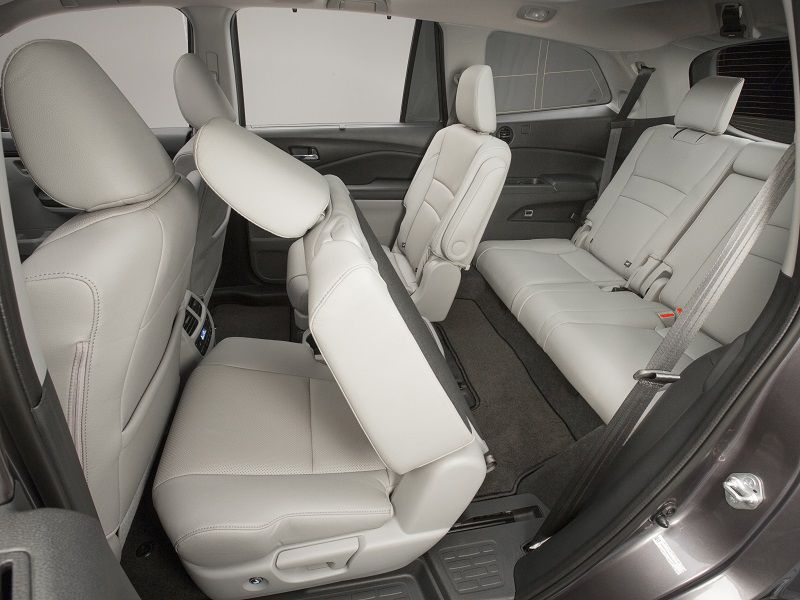
Photo by Honda
Infotainment
The base infotainment system in the Honda Pilot features a 5-inch color screen, a seven-speaker audio system, a USB charging port, and Bluetooth hands-free connectivity. One step up in the trim range adds an 8-inch color touchscreen, Apple CarPlay, and Android Auto while one step further adds options like navigation and a rear entertainment system.
The Volkswagen Atlas counters with a 6.5-inch color touchscreen, a six-speaker audio system, Bluetooth connectivity, and both Apple CarPlay and Android Auto on the base model. Mid-range trims get an 8-inch color touchscreen and an eight-speaker audio system, while top trims get a Fender premium audio system. What’s missing even on the top trim, though, is the all-important rear entertainment system.
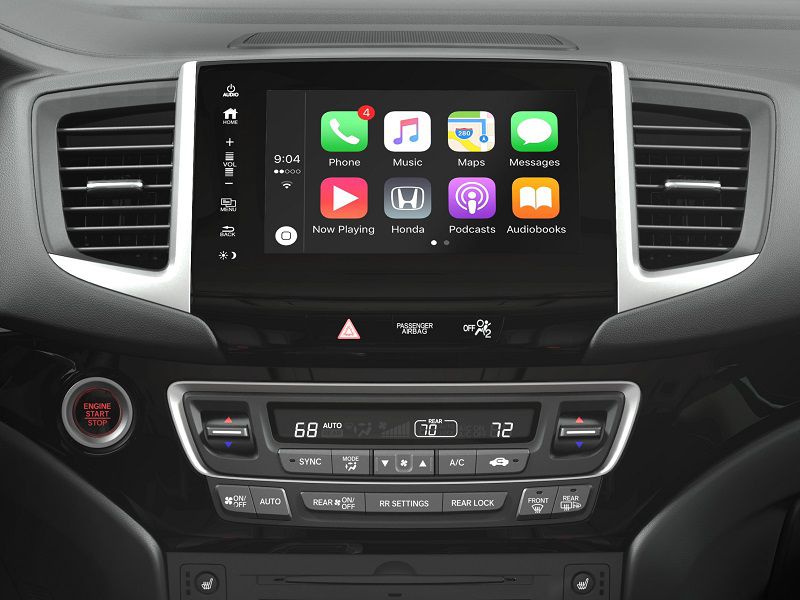
Photo by Honda
Performance
There are two engine choices on the Volkswagen Atlas, starting with a 2.0-liter turbocharged four-cylinder with 235 horsepower and 258 lb-ft of torque paired to an eight-speed automatic transmission. This is only on the base model. The rest of the lineup gets a 3.6-liter V6 with 276 horsepower and 266 lb-ft of torque.
The Honda Pilot offers a single engine with two transmission choices. Power comes from a 3.5-liter V6 engine with 280 horsepower and 262 lb-ft of torque paired to a six-speed automatic on base models or a nine-speed automatic on higher trim levels. There’s more power in the Pilot, and the nine-speed in higher trims gives it a smoother, more refined ride.
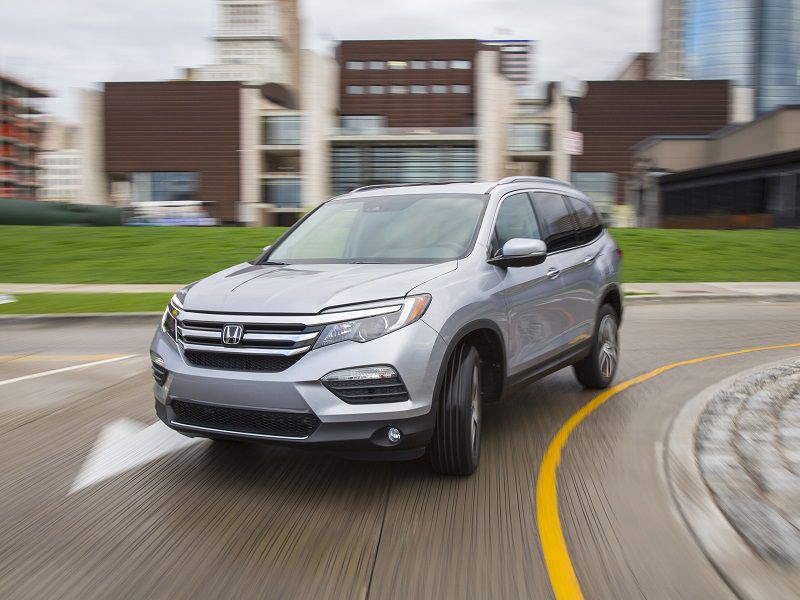
Photo by Honda
Fuel Efficiency
The Honda Pilot gets an EPA-estimated 20 mpg in the city, 27 mpg on the highway, and 23 mpg combined with the nine-speed automatic and front-wheel drive. All-wheel drive models get 19 mpg in the city, 26 mpg on the highway, and 22 mpg combined. The six-speed automatic numbers drop roughly 1 mpg.
The Volkswagen Atlas gets an EPA-estimated 22 mpg in the city, 26 mpg on the highway, and 24 mpg combined with the four-cylinder engine. Numbers fall to 18 mpg in the city, 25 mpg on the highway, and 20 mpg combined in front wheel drive V6 models or 17 mpg in the city, 23 mpg on the highway, and 19 mpg combined with all-wheel drive.
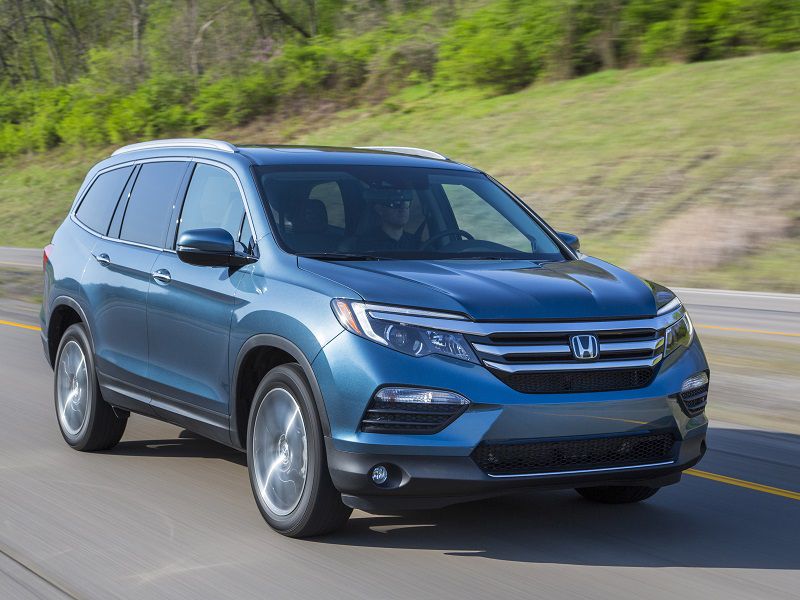
Photo by Honda
Cargo
The Volkswagen Atlas offers 20.6 cubic feet behind the third row, 55.5 cubic feet behind the second row, and 96.8 cubic feet behind the front seats. That’s a generous amount of space, particularly behind the third row. Even with the Atlas packed full of people, there’s still room for cargo.
The Honda Pilot offers 16.5 cubic feet behind the third row, 46.8 cubic feet behind the second row, and 83.9 cubic feet for cargo behind the front seats. That’s a good bit less, particularly with the third row in use. A family with a car full of kids may find it a challenge to get everything they need for the day tucked in behind the third-row seat.
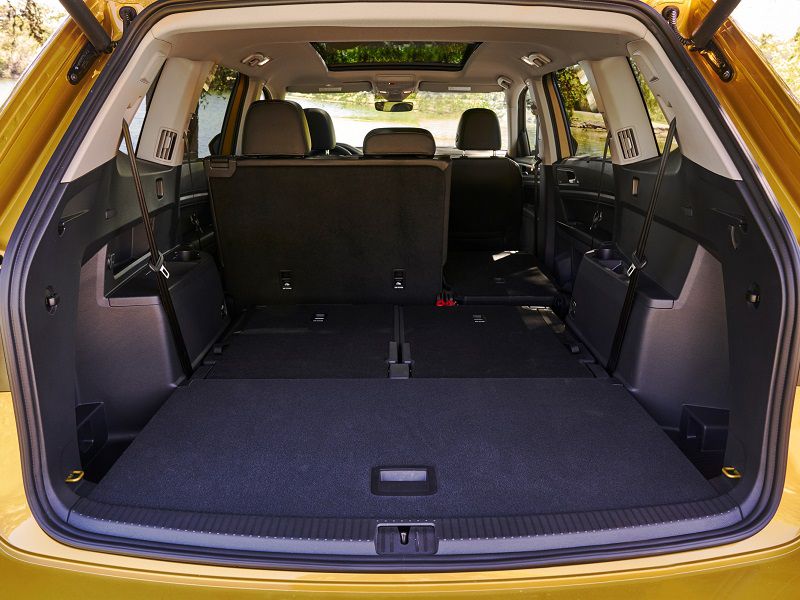
Photo by Volkswagen
Towing
These are large SUVs, but with every seat taken, there may not be enough room for all your cargo behind the third-row seat. If you plan on towing to carry some extra stuff, then both offer a maximum tow rating of 5,000 pounds for all-wheel drive models. The difference comes in the tow rating with front-wheel drive.
The Pilot can tow up to 3,500 pounds in front-wheel drive models while the Atlas can tow only 2,000 pounds in front-wheel drive models. The numbers are the same regardless of which Atlas engine you choose. This makes the Pilot a more versatile vehicle if you’re not in need of all-wheel drive.
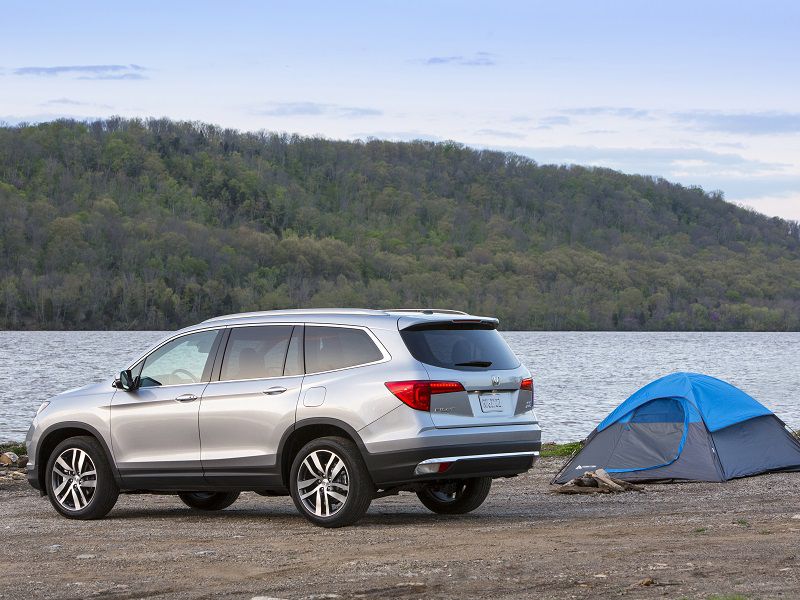
Photo by Honda
Verdict
The 2018 Honda Pilot and 2018 Volkswagen Atlas are two competitive choices for those looking at three-row SUVs, but there’s a clear winner. The Atlas only comes out ahead on pricing and cargo capacity. The Pilot takes the rest of the wins, from towing to seating to infotainment options.
Those who are looking for a more affordable choice will find it in the Atlas. Those with a bigger budget will find more options and a more well-equipped vehicle in the Honda Pilot.
2018 Honda Pilot
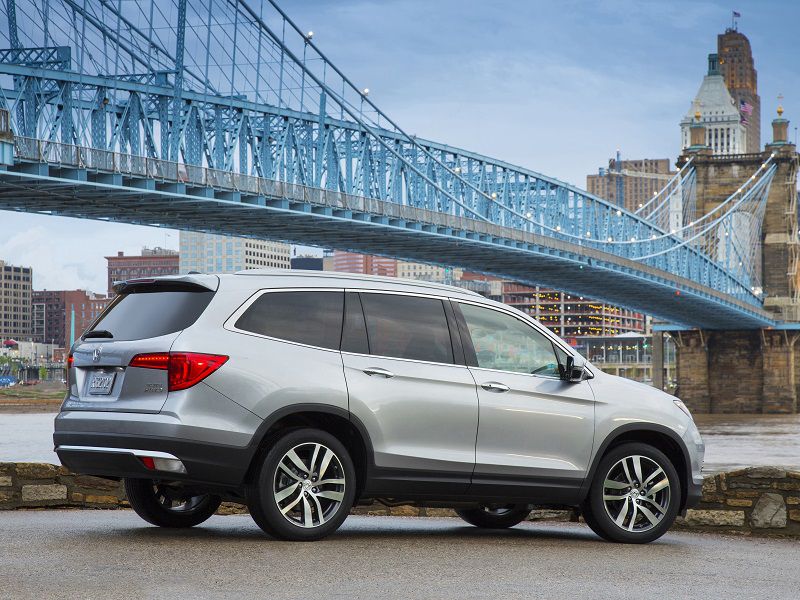
Photo by Honda